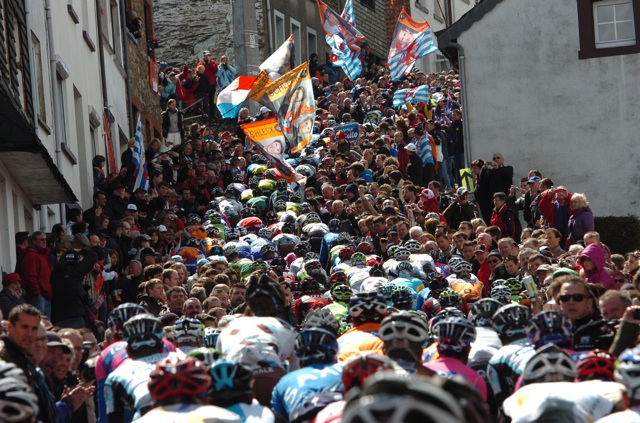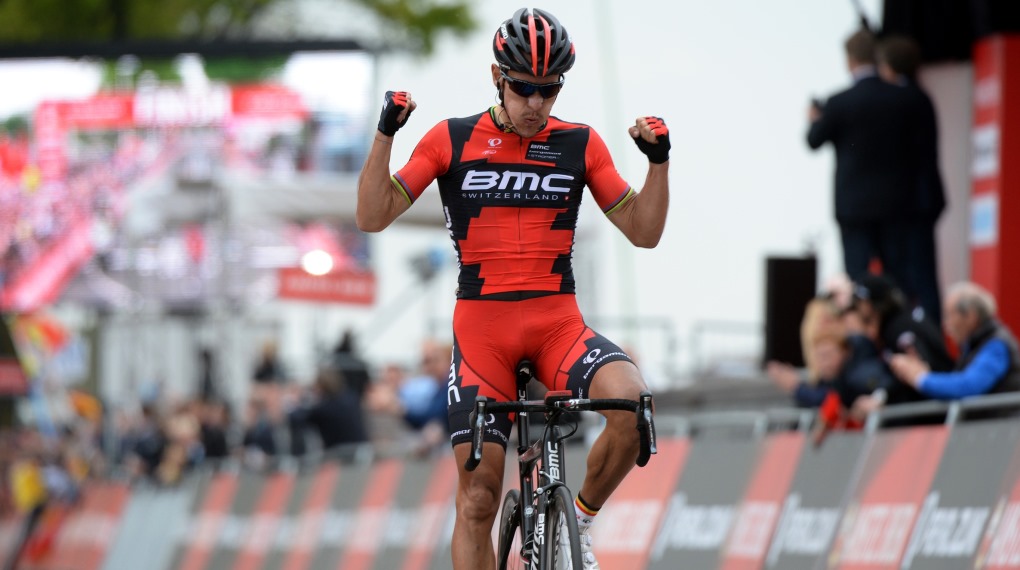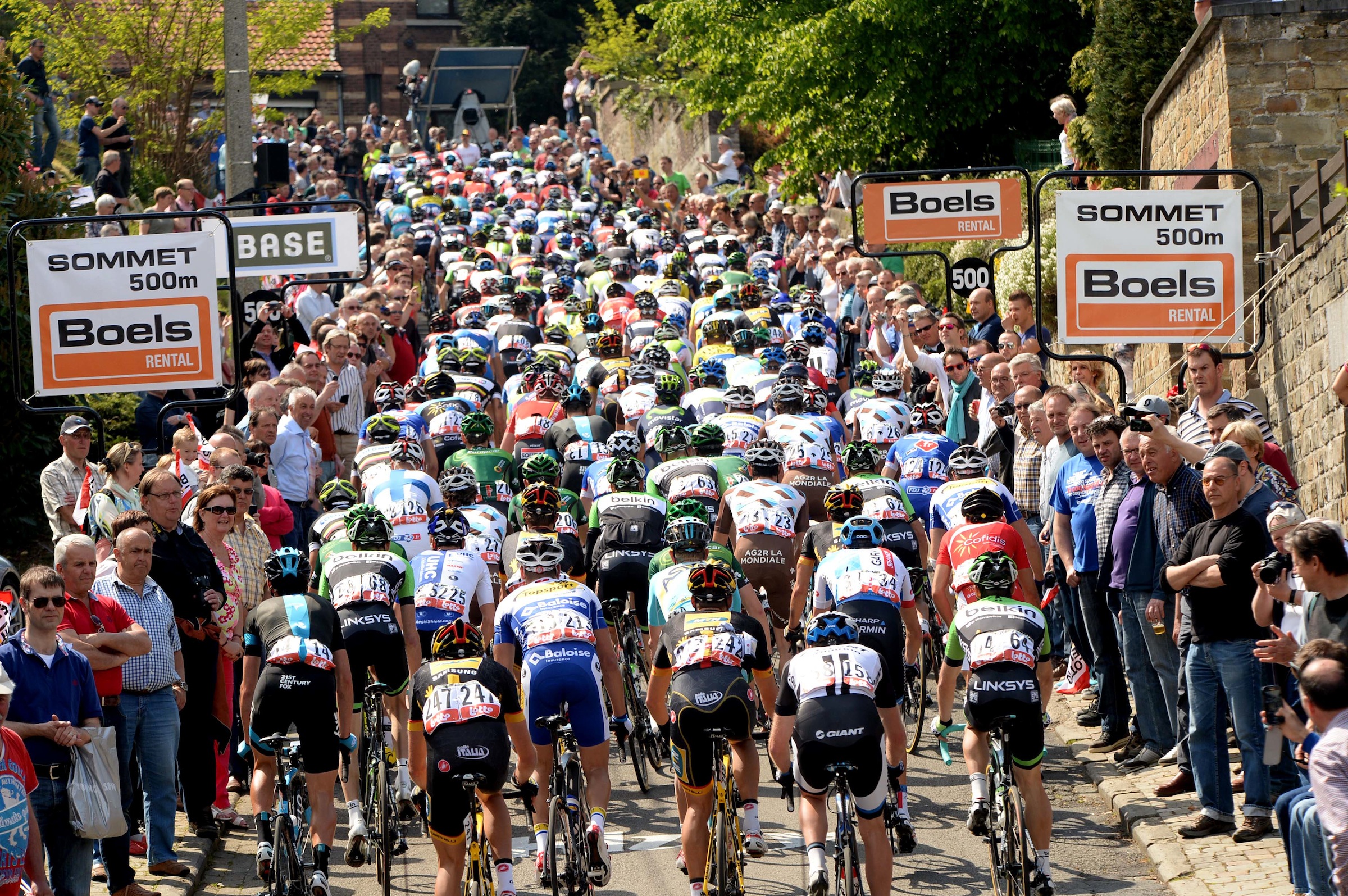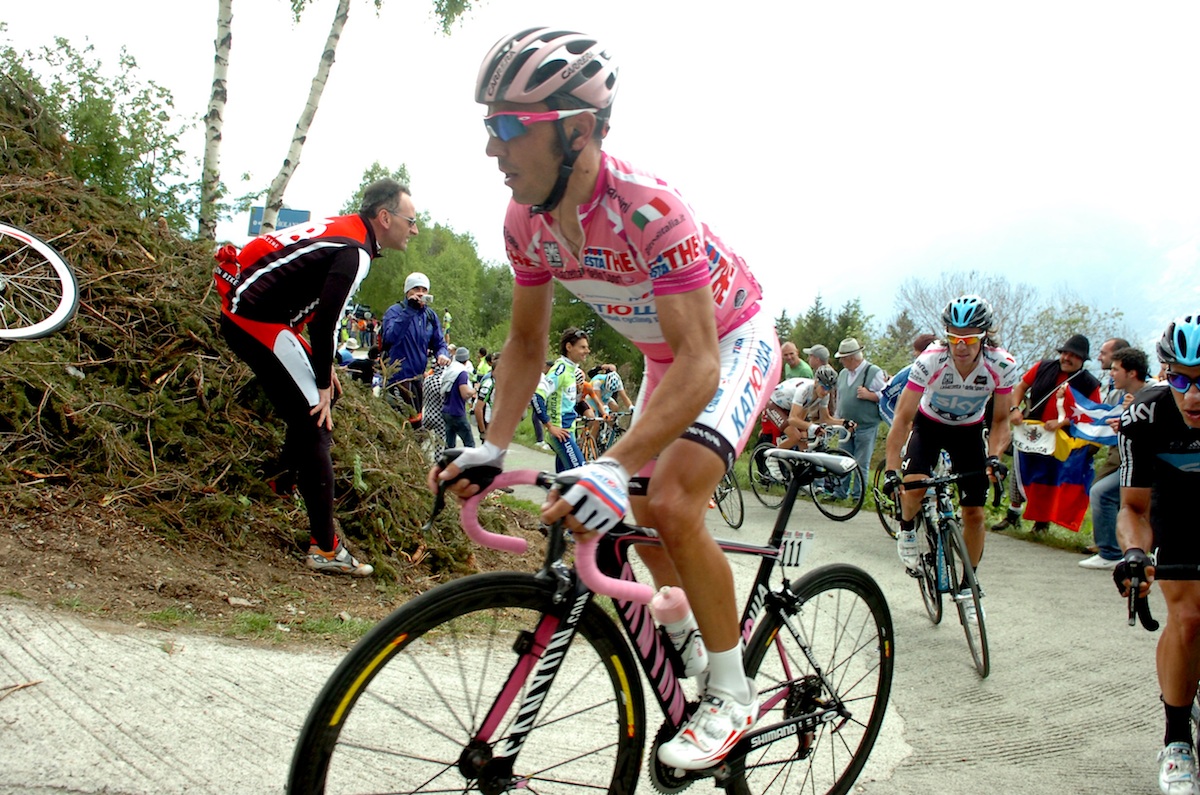Mur de Huy
-

Joaquim Rodriguez (Katusha, left) and Dan Martin (Cannondale-Garmin, right) race up the final, uncategorised ascent at Liege-Bastogne-Liege (Pic: Sirotti)
-

Each of the Ardennes Classics has its own distinct flavour, but Liege-Bastogne-Liege is the daddy of them all
-

Philippe Gilbert: Wallonia's favourite son (Pic: Sirotti)
-

The 2014 La Fleche Wallonne delivered another thrilling denouement on the Mur (Pic: Sirotti)
Mur de Huy
Of all the hills in the Ardennes, the Mur de Huy is possibly the most feared – and with good reason because it’s an absolute brute.
If you look at its 1.3km length and 9.3 per cent average gradient, your legs might not be trembling, but when you add in the fact that it steepens to a thigh-numbing 26 per cent maximum you realise why it’s so tough. In fact, between around 950m and 1.1km, it hovers between 18-23%, and when that’s done you still have 400m until the top.
And if that’s not enough, the finish of La Flèche Wallonne is on the third ascent of the climb, and with more than 200km in the legs. Yep, you read that correctly.
Including the Mur as the finale of the race in 1983 helped La Flèche Wallonne climb out of the shadow of Liege-Bastogne-Liege and become a target for riders in its own right, rather than a stepping stone. It also carved an identity for a course that had lacked a solid finish in its early years.
The climb snakes up from the town of Huy, starting with a sharp turn onto the Chemin des Chapelles (so called because of the seven chapels that line the ascent). The beginning is deceiving, and the temptation can be to go to hard from the bottom if you don’t know what’s to come. This video from the Mavic car gives you an idea of how steep the climb really is.
The hardest part is undoubtedly the S-bend where the gradient steepens to its maximum but, instead of attacking there, the majority of winners wait until they’re through that section before taking off. Picking your point of attack is extremely important, just watch last year’s finish where Dan Martin goes slightly too early, while Alejandro Valverde waits on his wheel and chooses the perfect moment.
Being on a Wednesday instead of the weekend (as is the case with the Amstel Gold and LBL), it’s easy to see how Flèche Wallonne can get missed, but it’s an excellent race in its own right and one which always delivers a great finish.





